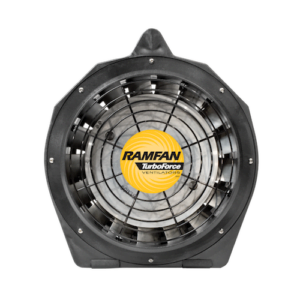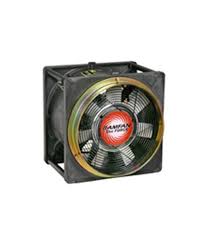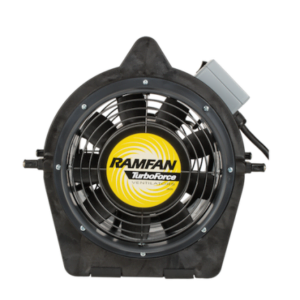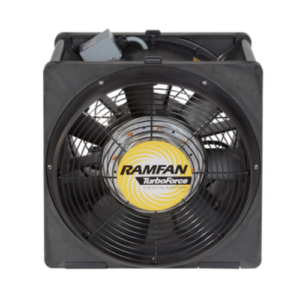Atex Zone 1 Fan
Discover our premium selection of Atex Zone 1 fans, meticulously designed to ensure safety and reliability in environments with frequent exposure to explosive atmospheres, such as gases, vapors, or mists. Ideal for industries like oil and gas, chemical manufacturing, and mining, these fans are sourced from leading manufacturers and meet the highest international safety standards.
Show moreEnsure dependable performance in highly hazardous conditions, enhance workplace safety, improve air circulation, and maintain compliance with our robust and high-quality fan solutions, specifically crafted for these critical industrial environments.
Showing all 4 resultsSorted by popularity
-
%27%20fill-opacity%3D%27.5%27%3E%3Cellipse%20fill%3D%22%23a7ab98%22%20fill-opacity%3D%22.5%22%20rx%3D%221%22%20ry%3D%221%22%20transform%3D%22matrix(84.96026%203.43384%20-3.96412%2098.08038%20149.9%20145.6)%22%2F%3E%3Cellipse%20fill-opacity%3D%22.5%22%20rx%3D%221%22%20ry%3D%221%22%20transform%3D%22matrix(37.0199%20-2.27291%2018.31267%20298.26648%20275.6%20147.2)%22%2F%3E%3Cellipse%20fill-opacity%3D%22.5%22%20rx%3D%221%22%20ry%3D%221%22%20transform%3D%22matrix(-29.529%20-1.32357%2013.38082%20-298.5284%2024.5%20100.2)%22%2F%3E%3Cellipse%20fill-opacity%3D%22.5%22%20rx%3D%221%22%20ry%3D%221%22%20transform%3D%22matrix(-2.51945%20-28.79749%20297.69096%20-26.04458%20116.5%20292.4)%22%2F%3E%3C%2Fg%3E%3C%2Fsvg%3E)
RamFan EFi75xx – 12″ Explosion Proof Fan
$4,48200Price Depends on product option Make a selection to update price -
%27%20fill-opacity%3D%27.5%27%3E%3Cellipse%20fill%3D%22%23282828%22%20fill-opacity%3D%22.5%22%20rx%3D%221%22%20ry%3D%221%22%20transform%3D%22matrix(-60.59603%2022.41515%20-21.00704%20-56.7894%20102.4%20116)%22%2F%3E%3Cellipse%20fill%3D%22%23fff%22%20fill-opacity%3D%22.5%22%20rx%3D%221%22%20ry%3D%221%22%20transform%3D%22matrix(1.31597%2034.16065%20-206.84658%207.96833%20132.4%20212.8)%22%2F%3E%3Cellipse%20fill%3D%22%23fff%22%20fill-opacity%3D%22.5%22%20rx%3D%221%22%20ry%3D%221%22%20transform%3D%22matrix(206.71631%2010.83354%20-1.9183%2036.6032%20128.5%2028)%22%2F%3E%3Cpath%20fill%3D%22%23fff%22%20fill-opacity%3D%22.5%22%20d%3D%22M237.9%20243.5l-65-1%204.2-241%2065%201z%22%2F%3E%3C%2Fg%3E%3C%2Fsvg%3E)
RamFan EFi150xx – 16″ Explosion Proof Fan
$4,25844Price Depends on product option Make a selection to update price -
%27%20fill-opacity%3D%27.5%27%3E%3Cellipse%20fill%3D%22%238c9272%22%20fill-opacity%3D%22.5%22%20rx%3D%221%22%20ry%3D%221%22%20transform%3D%22rotate(-133.6%20114.2%2028)%20scale(64.94092%20112.05211)%22%2F%3E%3Cellipse%20fill-opacity%3D%22.5%22%20rx%3D%221%22%20ry%3D%221%22%20transform%3D%22matrix(291.85742%20-64.16772%2010.97122%2049.90097%20146.1%20.7)%22%2F%3E%3Cpath%20fill-opacity%3D%22.5%22%20d%3D%22M241.7%20301L278%204.6l79%209.7-36.3%20296.6zM4.1%2028.7l54%20289.5-76.3-24.6z%22%2F%3E%3C%2Fg%3E%3C%2Fsvg%3E)
RamFan UB20xx – 8″ Explosion Proof Fan
$2,41164Price Depends on product option Make a selection to update price -
%22%20transform%3D%22translate(.6%20.6)%20scale(1.17188)%22%20fill-opacity%3D%22.5%22%3E%3Cellipse%20fill%3D%22%239fa09a%22%20rx%3D%221%22%20ry%3D%221%22%20transform%3D%22rotate(121.3%2026%20104.4)%20scale(49.77005%2051.1063)%22%2F%3E%3Cellipse%20rx%3D%221%22%20ry%3D%221%22%20transform%3D%22matrix(-5.68018%20247.42703%20-32.06535%20-.73612%20249.9%20123.1)%22%2F%3E%3Cellipse%20cx%3D%229%22%20cy%3D%22132%22%20rx%3D%2220%22%20ry%3D%22255%22%2F%3E%3Cellipse%20rx%3D%221%22%20ry%3D%221%22%20transform%3D%22matrix(-.00988%20-17.71005%20174.38725%20-.09725%20125.6%20255)%22%2F%3E%3C%2Fg%3E%3C%2Fsvg%3E)
RamFan EFi50xx – 16″ Explosion Proof Fan
$4,69754Price Depends on product option Make a selection to update price
- Atex Zone 1 fans are essential for ensuring safety and compliance in hazardous environments, such as the oil and gas industry.
- Key features of Atex Zone 1 fans include explosion-proof design, compliance with ATEX standards, corrosion resistance, and ease of maintenance.
- Proper installation and safety considerations, including intrinsically safe design and compliance with regulatory standards, are crucial for the safe operation of Atex Zone 1 fans.
Essential Features of Atex Zone 1 Fans
When selecting an ATEX Zone 1 fan for hazardous environments, understanding the essential features is paramount. These fans are designed to operate safely in areas where explosive atmospheres may be present, ensuring the utmost protection for both personnel and equipment. Here are some key features to consider:
1. Explosion-Proof Design
ATEX Zone 1 fans are engineered with explosion-proof housing to prevent any ignition sources from interacting with flammable gases or dust. The robust construction ensures that these fans can withstand the rigors and potential dangers of hazardous environments.
2. Compliance with ATEX Standards
Compliance with ATEX directives is crucial for any equipment used in hazardous areas. ATEX Zone 1 fans must meet strict certification standards to be deemed safe for use. The certification process validates that the fan components and overall design adhere to the necessary protocols and regulations.
3. Corrosion Resistance
Given the harsh conditions often present in hazardous zones, ATEX Zone 1 fans are built using materials resistant to corrosion. This enhances durability and prolongs the lifespan of the fan, ensuring reliable performance over time.
4. Variable Speed Controls
Many ATEX Zone 1 fans come equipped with variable speed controls to provide flexibility in operation. This feature allows operators to adjust airflow based on the specific requirements of their environment, optimizing both safety and efficiency.
5. Ease of Maintenance
The design of ATEX Zone 1 fans typically incorporates features that facilitate easy maintenance. Accessible components and straightforward assembly and disassembly procedures ensure that routine checks and repairs can be conducted safely and efficiently.
6. High Efficiency and Performance
These fans are often engineered to deliver high efficiency and performance, ensuring that even in the most challenging conditions, they can provide the necessary ventilation and airflow. Energy-efficient motors and advanced blade designs contribute to their overall effectiveness.
By understanding these essential features, companies operating in hazardous environments can make informed decisions when selecting an ATEX Zone 1 fan, ensuring both safety and operational excellence.
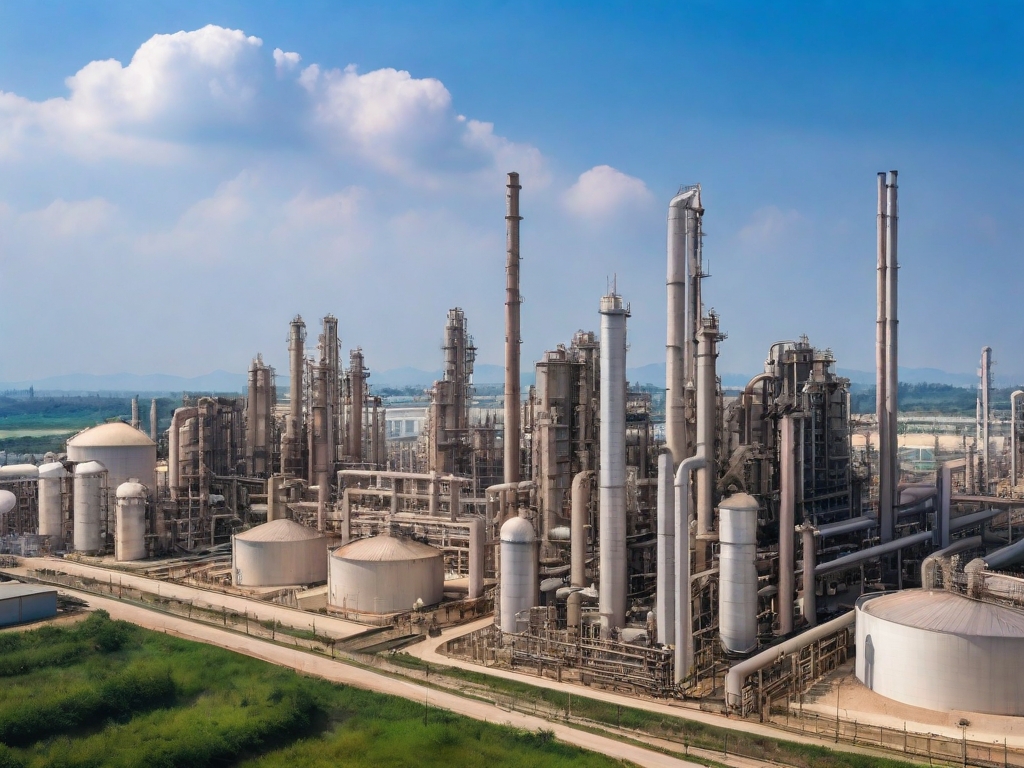
Benefits of Using Atex Zone 1 Fans
When operating in hazardous environments, ensuring safe ventilation is crucial. Atex Zone 1 Fans are specifically designed to mitigate risks while providing efficient air circulation. Here are some key benefits of using Atex Zone 1 fans:
Enhanced Safety
Atex Zone 1 fans are built to comply with stringent safety standards, ensuring that they can operate safely in potentially explosive atmospheres. By using these fans, companies can significantly reduce the risk of ignition and enhance overall safety for their workforce.
Robust Durability
Constructed from high-quality, explosion-proof materials, Atex Zone 1 fans offer exceptional durability. They are designed to withstand harsh environmental conditions, including extreme temperatures, corrosive elements, and high humidity, ensuring long-term performance and reliability.
Compliance with Regulations
Adhering to regulatory requirements is essential for any operation in hazardous areas. Atex Zone 1 fans are certified to meet international safety standards, such as ATEX and IECEx. This ensures that your equipment is compliant, helping you avoid legal and financial repercussions.
Improved Air Quality
Maintaining clean air in hazardous environments is vital for the health and well-being of employees. Atex Zone 1 fans provide efficient air circulation, reducing the concentration of hazardous vapors, dust, and other contaminants. This results in better air quality and a safer working environment.
Energy Efficiency
In addition to their safety features, Atex Zone 1 fans are designed to be energy-efficient. By optimizing airflow and reducing power consumption, these fans help companies lower their energy costs while maintaining essential ventilation in hazardous areas.
Versatility
Atex Zone 1 fans are available in various sizes and configurations, making them suitable for a wide range of applications. Whether it’s a small enclosure or a large industrial space, these fans can be tailored to meet specific ventilation requirements, ensuring optimal performance.
By investing in Atex Zone 1 fans, companies operating in hazardous environments can enhance safety, ensure compliance, and maintain efficient operations.
Safety Considerations for Atex Zone 1 Equipment
When selecting equipment for use in hazardous environments, particularly Atex Zone 1, safety is paramount. Atex Zone 1 refers to areas where explosive atmospheres due to gases, vapors, or mists are likely to occur in normal operation. Ensuring that the equipment meets stringent safety standards is crucial to prevent accidents and ensure operational efficiency.
Intrinsically Safe Design
One of the primary safety considerations for Atex Zone 1 equipment is its intrinsically safe design. Intrinsic safety involves limiting the energy — both electrical and thermal — available for ignition. This is important to prevent sparks or high temperatures that could ignite gases. Intrinsically safe equipment, like the solutions offered by The Intrinsically Safe Store, complies with these standards to ensure maximum safety.
Certification and Compliance
Atex Zone 1 equipment must adhere to strict regulatory standards and certifications. The ATEX directive outlines the requirements for equipment intended for use in explosive atmospheres. Ensuring that your Atex Zone 1 fan or any other equipment has the necessary ATEX certification is essential. This certification is a testament to the rigorous testing and quality control processes that the equipment has undergone.
Material and Construction
The materials and construction of Atex Zone 1 equipment play a critical role in safety. Non-sparking materials, rugged construction, and corrosion-resistant components are all important factors. Durable construction can withstand the harsh conditions often encountered in industries like oil and gas, ensuring long-lasting performance and safety.
Proper Installation and Maintenance
Proper installation and regular maintenance of Atex Zone 1 equipment are crucial to maintain safety standards. Installation should be carried out by qualified professionals who understand the specific requirements of hazardous environments. Regular maintenance checks can identify potential issues before they become serious hazards. The Intrinsically Safe Store’s products come with comprehensive guidelines to help ensure correct installation and maintenance.
By prioritizing these safety considerations, companies can create a safer working environment and minimize the risks associated with operating in hazardous conditions. The Intrinsically Safe Store offers a range of compliant, reliable, and safe equipment designed specifically for these challenging environments.
Types of Atex Zone 1 Fans Available
When it comes to Atex Zone 1 fans, selecting the right type for your specific requirements is crucial. These fans are engineered to operate safely in hazardous environments, specifically ones classified as Zone 1, where explosive atmospheres are likely to occur in normal operation. Here are some of the key types of Atex Zone 1 fans available:
Axial Fans
Axial fans are designed to move large volumes of air efficiently. They are ideal for applications requiring high airflow with low resistance. Their simplicity and durability make them a popular choice in the oil and gas industry as well as in other hazardous environments. Features include corrosion-resistant materials and explosion-proof motors, ensuring compliance with stringent safety standards.
Centrifugal Fans
Centrifugal fans operate based on the centrifugal force generated by a rotating disk. These fans are suitable for applications requiring higher pressure and are often used in conjunction with ductwork. Their design allows for safer operation in environments with potentially explosive atmospheres, making them a reliable option for ventilating hazardous areas.
Portable Fans
Portable Atex Zone 1 fans offer flexibility and mobility, allowing them to be easily relocated to different areas requiring ventilation. These fans are lightweight yet robust, designed to withstand the rigors of hazardous work environments. They come equipped with safety features such as spark-resistant materials and intrinsically safe motors, ensuring they meet or exceed Atex Zone 1 standards.
Inline Fans
Inline fans are designed to be installed within ductwork systems, providing a streamlined solution for ventilation in hazardous areas. These fans are particularly effective for localized air extraction and filtration in confined spaces. They are engineered with explosion-proof components, maintaining safety while ensuring powerful and efficient airflow.
Explosion-Proof Cabinet Fans
Explosion-proof cabinet fans are housed in protective enclosures, making them suitable for indoor use in hazardous areas. These fans are designed to provide reliable and safe ventilation without compromising on performance. The cabinets are built to contain any internal explosions, preventing them from igniting the surrounding atmosphere.
By understanding the different types of Atex Zone 1 fans available, you can choose the best solution for your specific needs, ensuring both safety and operational efficiency in hazardous environments. At The Intrinsically Safe Store, we’re committed to helping you find the right products that meet your safety and compliance requirements.
Installation Best Practices for Atex Zone 1 Fans
Ensuring the safe and effective installation of an Atex Zone 1 fan is crucial for maintaining safety and operational efficiency in hazardous environments. Below are some best practices to follow during the installation process:
1. Understand the Area Classification
Before installing an Atex Zone 1 fan, it is essential to fully understand the area classification where the fan will operate. Zone 1 classifications indicate that an explosive atmosphere is likely to occur during normal operation. Familiarizing yourself with this classification helps you prepare adequately for installation.
2. Verify Certification and Compliance
Ensure that the fan you are installing is certified for Atex Zone 1 environments. Check that it meets all relevant safety standards and regulatory requirements. This verification is critical for operational safety and compliance with industry regulations.
3. Use Intrinsically Safe Equipment
During the installation, only use tools and equipment that are certified as intrinsically safe for Atex Zone 1 areas. This minimizes the risk of sparks or static discharge that could ignite explosive atmospheres.
4. Proper Grounding and Bonding
Grounding and bonding are essential to dissipate any static electricity that may build up. Ensure that the fan, along with any related electrical installations, is properly grounded following the manufacturer’s guidelines and industry standards.
5. Comprehensive Installation Plan
Prepare a detailed installation plan that incorporates risk assessments, safety checklists, and step-by-step procedures. This plan should be reviewed and approved by safety officers and management to ensure comprehensive coverage of all safety aspects.
6. Ventilation and Access Control
Make sure that there is adequate ventilation in the installation area to disperse any flammable gases that might be present. Implement access control measures to restrict entry to qualified personnel only during the installation process.
7. Professional Installation and Inspection
Hiring certified professionals for the installation ensures that the job is completed correctly and safely. After installation, conduct a thorough inspection to verify the integrity and safety of the installed fan.
By adhering to these best practices, companies operating in hazardous environments can ensure the safety and reliability of their Atex Zone 1 fans. Proper installation not only protects the workforce but also enhances the longevity and efficiency of the equipment.
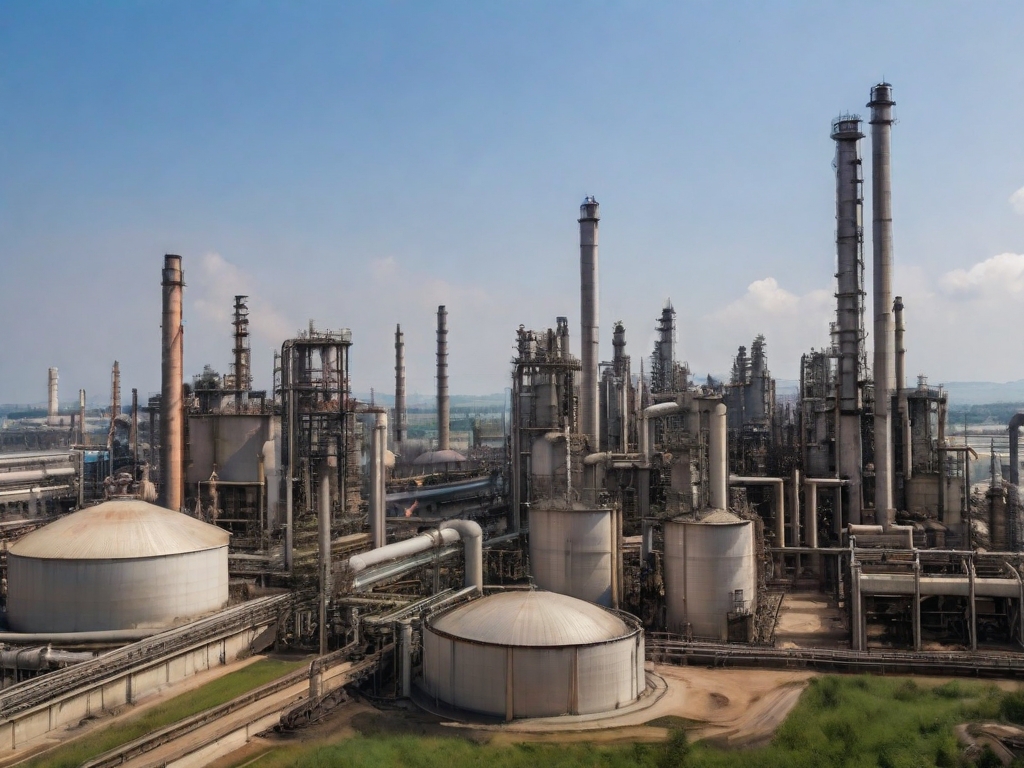
FAQs on Atex Zone 1 Fan
What is an Atex Zone 1 fan?
An Atex Zone 1 fan is a specialized ventilation or cooling device designed for use in environments classified as Zone 1 under the ATEX directive. These areas are considered to have a high risk of explosive atmospheres due to the presence of flammable gases, vapors, or dust. Atex Zone 1 fans are engineered to operate safely by preventing ignition sources from triggering an explosion.
What distinguishes Atex Zone 1 fans from non-Atex fans?
Atex Zone 1 fans are built to adhere to stringent safety and compliance standards specific to hazardous environments. Their key differentiators include:
- Explosion-proof construction to prevent ignition.
- Certification per Atex directives, signifying they meet European regulations for hazardous areas.
- Specialized materials and components that reduce the risk of sparking or overheating.In contrast, non-Atex fans lack these safety features and are not suitable for use in explosive atmospheres.
Which industries commonly use Atex Zone 1 fans?
Atex Zone 1 fans are predominantly used in industries that handle volatile substances and require stringent safety measures. These include:
- Oil and gas
- Chemical and petrochemical
- Mining
- Pharmaceuticals
- Paint manufacturingSuch fans help mitigate the risk of explosions and ensure operational safety in these high-risk settings.
Can Atex Zone 1 fans be used in Zone 0 environments?
Atex Zone 1 fans are specifically designed for Zone 1 areas, where explosive atmospheres are likely to occur during normal operations. While they offer significant safety features, they are not generally certified for use in Zone 0 environments, where explosive atmospheres are present continuously or for long periods. For Zone 0 applications, specialized Zone 0 rated equipment is required, which meets even more rigorous safety standards.
What are the power supply requirements for Atex Zone 1 fans?
Atex Zone 1 fans can operate on various power supply configurations, depending on their design and the manufacturer’s specifications. The common power supply types include:
- Single-phase or three-phase electrical power
- Voltages ranging from low to high, as specified by the manufacturerIt is crucial to ensure the power supply matches the fan’s requirements to maintain its intrinsic safety and performance standards. Always refer to the product’s technical documentation for precise power supply specifications.


























